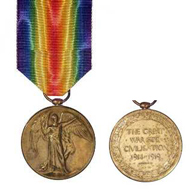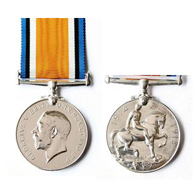ASHMORE Edward Thomas
-

- 3754
- Private
- 26 Battalion
- 2nd Pioneer Battalion
- Beerburrum Soldier Settlement
- Yes
- 1 December 1897
- Mocatta`s Corner, via Dalby, Queensland
- 8 September 1915
- HMAT A62 Wandilla
- 31 January 1916
- Brisbane
-
Family
The Ashmore and Johnston families were original settlers of Mocatta's Corner, a small township about eight miles from Dalby. Richard Ashmore and Margaret Brown Johnston married on 22 February 1887. For a number of years Richard was a bullock team carrier between Dalby and Eidsvold. Edward Thomas Ashmore was born at Mocatta's Corner on 1 December 1897, the fifth of ten children to be born to Richard and Margaret.
Edward and two of his older brothers, John and William, served in WWI. Only Edward and John came home.
In the Electoral Rolls of 1903 and 1905, Richard and Margaret Ashmore were recorded at Mocatta's Corner. Richard was a labourer. By 1913, he was a farmer. His eldest son Richard Alexander and next oldest John Rueben were labourers.
Military Context
The 26th Battalion was raised at Enoggera, Queensland, in April 1915 from recruits enlisted in Queensland and Tasmania, and it formed part of the 7th Brigade. It left Australia in July and, after training in Egypt, landed at Gallipoli on 12 September. The 26th played a purely defensive role and at various times was responsible for the defence of Courtney's and Steele's Posts, and Russell's Top. It withdrew from the peninsula on 12 December.
After another stint in Egypt, the 7th Brigade proceeded to France as part of the Australian 2nd Division in March 1916. In concert with the 28th Battalion, the 26th mounted the first trench raid undertaken by Australian troops on the Western Front on 6 June. The Battalion fought at Pozieres between 28 July and 7 August. After a short spell in Belgium, the 2nd Division came south in October to attack again in the Somme Valley. The 26th Battalion took part in two attacks to the east of Flers, both of which floundered in mud and slush.
Enlistment
John Reuben Ashmore, aged 25 years, enlisted at Brisbane on 23 June 1915. He was assigned to Reinforcements for the 9th Battalion. He arrived in Egypt in January 1916 and fought there and in France where he was wounded in action. Sergeant Ashmore returned to Australia on HMAT A23 "Suffolk" and he was discharged on 30 July 1919.
William Hugh Ashmore, aged 20 years, enlisted at Toowoomba on 30 November 1915. He was assigned to the 11th Reinforcements of the 25th Battalion. He departed Australia on HMAT A16 "Star of Victoria" on 30 March 1916 and he proceeded to Egypt. He joined his battalion in the field in France on 6 July 1916. He was reported missing in action on 5 August 1916, and was officially declared killed in action after a Commanding Officer's court of enquiry held on 25 July 1917. Private Ashmore, 25th Battalion 4364, is commemorated in the Memorial Wall at Villers-Bretonneux.
Edward Ashmore enlisted at Toowoomba on 8 September 1915. Being under 21 years of age, he needed to present with the permission of his parents. He declared his age as 18 years and 3 months and occupation as farmer. He was 5 feet 10 1/2 inches in height, weighed 138 pounds, of fair complexion, with greenish eyes and black hair. His religion was Church of England and he listed his father Mr. Richard Ashmore of Mocatta's Corner, Bell Line via Dalby, as his next of kin.
His service number was 3754. He was allocated to the 9th Reinforcements of the 26th Battalion.
Military service
He embarked from Australia on HMAT A62 "Wandilla" on 31 January 1916 bound for Egypt. A fellow serviceman on board was Frederick Collier.
On 11 March 1916 at Moascar in Egypt, Private Ashmore was transferred to the 2nd Pioneer Battalion. Pioneers were typically responsible for camp construction, logistics and railway construction. Eight days later, he embarked at Alexandria to join the British Expeditionary Force in France. He disembarked at Marseilles on 26 March.
On 15 July 1916, Private Ashmore proceeded from Marseilles to England on Llandovery Castle as kit guard. Two years later, Llandovery Castle was sunk by German submarine U89 while returning from having transported wounded men home to Canada. The attack on vessel, clearly marked with a red cross, and then survivors in lifeboats and the water equated to a war crime. The Germans were entitled to stop and search, but not sink, and certainly not to attack survivors, probably with the intent of eliminating witnesses. Only 24 of 258 persons survived. Among the dead were 74 men of the Canadian Medical Corps and all fourteen Nursing Sisters on board. By the time of this atrocity, Edward Ashmore had already been repatriated to Australia.
On 5 August 1916, Private Edward Ashmore's brother William with the 25th Battalion was declared missing (it was to be July 1917 before he was officially declared killed in action).
On 17 August 1916, Private Ashmore was marched in to the 2nd Australian Division Base Depot at Etaples in France. Four days later, he marched out to join the 2nd Pioneer Battalion in the field. The Battle of Pozieres was over, but the 2nd Division was preparing to move south to attack again in the Somme Valley.
On 23 January 1917, Private Ashmore proceeded from his unit by 13th Australian Field Ambulance to the 45th Casualty Clearing Station at Dernancourt with trench feet. He was admitted on 25 January. He was transferred to the 6th General Hospital at Rouen and admitted. On 22 February, his fitness was assessed as Class A and he was released to the No.2 Division Base Depot at Etaples. He re-joined the 2nd Pioneers in the field on 8 March.
In early 1917, the 26th Battalion joined the follow-up to the German withdrawal to the Hindenburg Line and in March attacked at Warlencourt and Lagincourt. On 3 May, the battalion was also involved in the second attempt to breach the Hindenburg Line defences around Bullecourt.
On 13 July 1917, Private Ashmore was transferred from 2nd Pioneers Battalion to the 26th Battalion.
On 14 August 1917, Private Ashmore proceeded on leave to England, and he re-joined his battalion on 25 August. Later that year the focus of the AIFs operations switched to Belgium. There, the 26th Battalion fought in the battle of Menin Road on 20 September, and participated in the capture of Broodseinde Ridge on 4 October.
On 1 November 1917, Private Ashmore was wounded severely by poison gas from a shell explosion. He was treated at the 17th Casualty Clearing Station at Remy Siding and the 3rd General Hospital at Abbeville but then evacuated to England on the "Jan Breydel" on 14 November. He was admitted to Bevan (Shorncliffe) Military hospital at Southgate next day.
On 4 January 1918, Private Ashmore was released to the 1st Auxiliary Hospital at Harefield. Three days later, he was granted two weeks of furlough, after which he was ordered to report to No.1 Command Depot at Sutton Veny. There his fitness was assessed as B1A2 which meant that he might be expected in due course to return to support activity on the continent. The early prognosis for a return to active service proved too optimistic. On 5 March 1918, his fitness was reassessed as B2C and expectations of an imminent return to Europe were gone.
On 14 March, he was marched out to No.2 Command Depot at Weymouth in preparation for return to Australia.
Repatriation
On 21 April 1918, Private Ashmore departed aboard HMAT A29 "Suevic" and disembarked at Melbourne on 7 June. On 10 July 1918 at Brisbane, he was discharged from the A.I.F. He was granted a war disability pension of three pounds per fortnight from 11 July.
After the War
Edward Ashmore was issued the British War medal and the Victory medal.
In the Electoral Roll of 1919, Richard and Margaret Ashmore and their sons Richard and John were still farming at Mocatta's Corner.
On 26 May 1920, Edward Ashmore married Mary Martha Stanley and they lived in Brisbane. Over the next ten years, they had eight children. In the Electoral Roll from 1925 to 1936, Edward and Mary were recorded at Kate St., Newmarket. Edward was a Postmaster General's Department telegraph linesman.
Edward's father Richard Ashmore died on 30 December, 1922, aged 80 years, and he was buried at Dalby. His widow Margaret remained at Mocatta's Corner for a time but by the Roll of 1930 was living in Toowoomba with her second youngest son, James Mackenzie Ashmore. By 1937, the Ashmore family generally had moved to Dalby township. Margaret, James and his wife Beris were living in Bessie Street. James was a shearer.
On 17 March 1942, ready again to serve in World War 2, Edward Ashmore enlisted at Kangaroo Point, Brisbane. His service number was Q155340. No details of his period of service are to hand but it is likely to have been short.
In the Rolls from 1943 to 1954, Edward and Mary were resident at Darragh St., Kangaroo Point. Their sons Malcolm (married) and Neville were residing with them.
Edward's mother Margaret Ashmore (nee Johnston) died on 15 January 1947, aged 80 years, and she was buried at Dalby. She was living in Bessie St., Dalby at the time of her death.
By 1958, Edward and Mary had moved to 66 Begonia St., Inala. Only their son Neville was residing with them. They were still at Inala in 1963 and their sons Neville and Richard, a policeman, were living with them. By 1968, their sons had moved out.
Edward's brother, in life and in arms, David Rueben Ashmore, ex A.I.F., died on 15 July 1960 and he was buried in Dalby cemetery.
David's oldest brother, Richard, died in 1968, aged 80 years, and also was buried at Dalby.
Edward Thomas Ashmore, ex A.I.F., died in 1976 and his wife Mary died in 1981.
The eight children of Edward and Mary Ashmore were born in their first ten years of marriage. They were: -Neville Keith (died 2007). In the Electoral Roll of 1954, Neville was recorded at 60 Darragh St., Kangaroo Point. He was a labourer. He was a timber orderman when he married Beverley. The couple lived at Bootes St., Inala in 1968 and were still resident there in 1980.
-Reginald Brian (who died in 2008). He was a police officer with Queensland Police and moved postings regularly.
-Gordon Douglas (died in childhood in 1927). He was buried in Groveley cemetery.
-Irene Daphne (1922-1976). She married Noel Douglas McConnell, a storeman, and they had three children. They lived in Barberry St., Inala.
-Malcolm Edward (1924-1996). He married Mavis White. In the Electoral Roll of 1954, they were recorded at 60 Darragh St., Kangaroo Point. Malcolm was a linesman. In 1980, they lived in Benecia St., Wavell Heights.
-Bevis Joan (1925-1988). She married Charles Sydney Melloy, a transport driver. In 1980, they lived in Abelia St., Inala.
-Maureen (1927-1994)
-Aileen (born in 1930)
-
- Broodseinde
- Bullecourt
- Menin Road
- Western Front
-

-

- Returned to Australia
- Disembarked HMAT A29 "Suevic" at Melbourne on 7 June 1918, discharged 10 July, 1918
- 1976
- Queensland
- 78 years
-
Australian War Memorial National Australia Archives Trove digitalised newspapers Ancestry.com.au
Diggers image: Courtesy of State Library of Queensland - Charlie50
